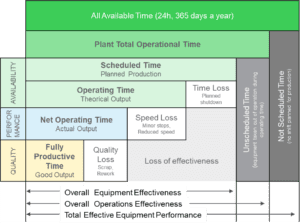The traditional power market is transforming. New energy building blocks are fast replacing an energy model that came about during the late 19th century. Renewable energy. Smart grid. Decentralization. Decarbonization. Real-time data. A major result of disrupting the outdated, one-way power flow is energy choice. Choice over both supply and demand. This empowerment also is giving energy consumers a previously unheard energy voice.
Who is talking? Prosumers. With smart, connected technology, prosumers now can make more proactive and flexible decisions about their energy. In fact, with a two-way flow of power enabled by digitization, today’s energy consumers can become energy producers themselves.
Digital innovation has changed the global energy map, giving prosumers precise and dynamic control of their energy destiny as they speed toward a cleaner, more energy-efficient, and more sustainable future.
Along the way, empowered energy consumers — whether homeowners or huge corporations worldwide — are looking for mitigated climate change, autonomy, resiliency, and cost optimization. This is welcomed news for companies facing the energy-carbon paradox. By using renewables, and, increasingly, other forms of cleantech such as battery storage and electric fleets, organizations now have the potential to reduce their energy costs while meeting carbon reduction targets at the same time.
A new paradigm for dynamic, flexible energy supply and demand for prosumers
From a traditional, linear model…
to a new, dynamic model based on the digitization of energy…
When prosumers steer the energy course …
Several factors are fast enabling this prosumer culture: the digitization of energy and advanced energy management technologies; decentralized energy, grid parity, and microgrid innovation; and widespread electrification. For prosumers, the benefits of energy transformation are far-reaching:
Better visibility, knowledge, and control of energy
Energy choice is now a reality. For some consumers, that means being able to select cleaner, alternative energy sources on personal principle for a greener future. For others, that means taking advantage of end-to-end visibility — enhanced by digitization — to align energy use to the best time of day for cost savings.
For many large companies, data-driven energy cost optimization can have a significant impact. The private equity firm Blackstone, for example, reduces energy spend across its $365 billion asset portfolio by strategically procuring energy using Schneider Electric’s EcoStruxure™ Resource Advisor cloud-based platform to consult energy and utility data and Energy & Sustainability Services experts to provide data analysis.
Greater autonomy and resiliency
As the decentralization of energy transforms “the ‘one-way street’ of energy into a multi-directional, multi-lane highway,” prosumers can leverage more autonomous, cleaner energy sources. Microgrid innovation is a key driver of this energy transformation, also allowing for more resilient power during unpredictable outages (e.g., as the U.S. experienced throughout last year’s major weather events) and/or regularly planned power cuts to manage grid congestion (e.g., in India).
Cleaner, more energy-efficient and cost-effective energy options
Cost optimization also can be achieved when energy flexibility is available (battery, load curtailment, and any kind of flexible generation that can be controlled). While distributed generation (that is, “behind-the-meter”) is the main source of flexibility today, prosumers now have more control of their consumption as they manage variable tariffs (based on time of use or incentive-based pricing such as curtailment) or peak consumption rates.
Newfound benefits for grid operators
And on the horizon for system operators: energy communities. People who want to buy together, share their energy assets, and leverage synergies within a dynamic energy community will create new opportunities for “grid operators and aggregators and service providers that can coordinate prosumers in order to implement local strategies and monetize aggregated flexibility.
Who are today’s energy innovators?
Today, experts in IoT and analytics are pushing this century’s energy transformation across the globe by making energy flexibility possible. Such flexibility is essential for coping with the variability of renewables and T&D capex deferral (that is, avoiding new copper and poles and transformers while still committing to generation capex). These factors overcome what many have cited as hurdles for making the use of renewables mainstream. Electric system flexibility allows for power adjustments to adjust to external conditions from a grid operator (such as energy pricing).
Going green is deeply aligned with Schneider’s own strategy as the markets we serve, combined, are responsible for 70% of the world’s energy consumption.
We strive to be a corporate actor shaping the future energy landscape, with our own sites as prosumers in the electricity grid and demonstrating that this type of innovation is technologically possible today.
As part of our sustainability strategy, our ambition is to drastically cut CO2 emissions from our operations, following a 2°C trajectory in line with Science-Based Targets.
The convergence of energy and digitization is changing electrical energy’s roadmap. Electrical system flexibility, cleantech, and digital innovation are creating the path toward a more sustainable, greener future. Today, prosumers have emerged across this new landscape, actively steering down this promising road while realizing greater visibility of energy use, autonomy and resiliency, and improved energy efficiency along the way.


Conversation
This is the future. Thanks to Schneider Electric for taking the lead